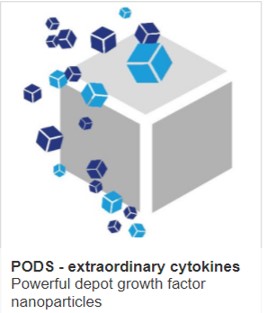Setting standards: making research scientific

Biological research standards are the invisible agreements that make life science actually scientific. Creating these standards is more complicated (and political) than most people realize.
The Evolution of a Biological Standard
The need for a new standard This typically occurs omeone notices that researchers can't compare their results because they're all defining and measuring things differently. For example, labs might be using different methods to measure the same thing, or doctors getting inconsistent results from the same diagnostic test, or environmental scientists unable to agree on what counts as "clean water."
Getting the experts together Once the problem is recognized by researchers in the field, specialists including researchers who do the actual work, clinicians who use the results on patients, regulators who worry about safety, equipment manufacturers, and the statisticians who have to make sense of it all.
The experimental phase Multiple labs have to actually test the proposed methods with real samples, real organisms, and real biology. Things that work perfectly in one lab might fail in another.
Peer review Biological standards face intense scientific scrutiny. The research community forms societies which implement, adopt and cite the standard in their work.
Making it official If the science checks out and enough people agree, you get a published biological standard. For example, MISEV is the standard for extracellular vesicles (EVs). Adoption is often voluntary until regulators or funding agencies or sometime sjournals, make it mandatory. For example, many journals require karyotyping of embryonic stem cells to ensure that experiments are relevant and reproducible.
Regulations evolve New discoveries, better technology, and evolving understanding of biological systems mean that standards need constant updates.
The Biological Standards Ecosystem
International health standards try to harmonize medical practice globally – these include WHO guidelines for disease classification or pharmaceutical testing protocols.
Environmental monitoring standards help us figure out if ecosystems are healthy and compare environmental data across regions and countries.
Laboratory standards ensure that when a lab in, say, Sweden and a lab in Singapore test the same sample, they get comparable results.
Species and taxonomy standards keep biologists from arguing about what exactly they're studying. This is crucial when trying to protect endangered species or track disease outbreaks.
Clinical and diagnostic standards make sure medical tests actually mean what doctors think they mean, whether it's cancer biomarkers or COVID testing protocols.
Food safety and agricultural standards govern everything from pesticide residues to organic certification – basically, what's safe to eat and how we know it.
Who decides?
The landscape is fragmented:
International health organizations like WHO and FDA equivalents worldwide set medical and pharmaceutical standards. These can become legally binding.
Scientific societies create research standards. For example, ISEV sets the standards for EVs. Working groups are set up to agree and publish the standards
Academic consortiums can also develop standards for emerging fields – like genomics data sharing or proteomics protocols – often driven by major research initiatives.
Environmental agencies like EPA (US), EEA (Europe), and similar bodies worldwide create standards for environmental monitoring and protection.
International standards bodies like ISO have biological subcommittees, but they often defer to domain experts.
When Biological Standards Converge
Despite the international cultural and political challenges (e.g. around food), harmonization can happen:
Global health emergencies force rapid coordination – COVID-19 drove unprecedented international alignment on testing and monitoring standards.
Research collaboration creates practical pressure for common methods. If you want to publish with international colleagues, you need compatible standards.
Regulatory mutual recognition happens when agencies trust each other's standards enough to accept data generated under different protocols.
Market forces drive convergence in areas like pharmaceutical development, where companies need products that work in multiple regulatory environments.
Standards Harmonization
Cancer biomarkers took decades to standardize globally, but now oncologists worldwide can interpret each other's test results with reasonable confidence.
DNA barcoding for species identification started as a Canadian academic project but became a global standard because it solved a real problem for biodiversity research.
Clinical laboratory quality standards like those from the Clinical Laboratory Standards Institute (CLSI) are technically US-based but adopted worldwide because they work.
Standards not Harmonizing
Environmental monitoring protocols for things like water quality vary dramatically between countries, creating ongoing challenges for global environmental research.
Food standards vary greatly due to pressure from lobby groups such as farmers, environmentalists and religious eladers.
Biological Standards are Messy
Biological standards aren't just technical documents. They encode assumptions about how biology works, what kinds of evidence we trust, and what levels of risk we're willing to accept.
The reproducibility crisis in biology is partly a standards problem – different labs using slightly different methods and getting different results.
Precision vs. practicality is a constant tension. The most scientifically rigorous standard might be too expensive or complex for routine use.
Innovation vs. standardization creates dilemmas. Standardize too early and you might lock in inferior methods. Wait too long and you can't compare results across studies.
Cultural and economic factors influence biological standards more than scientists like to admit. What counts as "ethical" research varies between countries, as do resources for implementing complex standards.
Continuing to set standards
Biological standards are where science meets politics, economics, and human values. They're created by real people making real decisions about how we understand and protect life on Earth.
The process is messier than most people realize because biology itself is messy. Unlike engineering standards where you can test everything in controlled conditions, biological standards have to work with living systems that don't always cooperate.
The beautiful thing is that when biological standards really matter – like during a pandemic or when protecting endangered species – the scientific community usually finds a way to work together. It takes longer than anyone wants, it's never as elegant as researchers would like, but we end up with blood tests that work everywhere and conservation efforts that can actually compare results across continents.
Biological standards development is scientific, political, and deeply human. This makes perfect sense, because ultimately, these standards are about humans trying to understand and protect the living world we're all part of.
IMAGE: Measuring cells CREDIT: Bigsotck
Learn more about powerful technologies that are enabling research:



